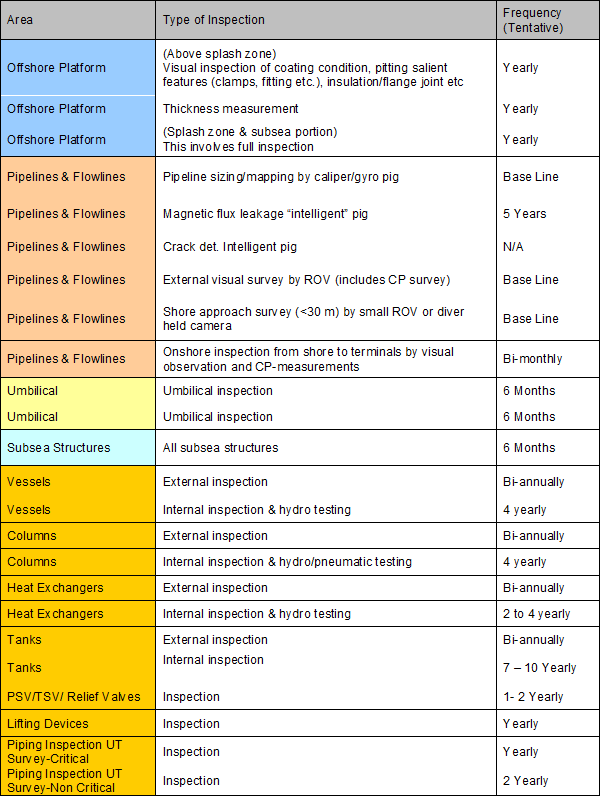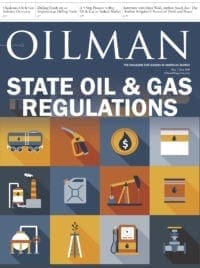Exploration policy
Under the NELP (New Exploration Licensing Policy), operating companies (those involved in the production of oil and gas) have to compete with all oil and gas companies, including national oil companies, for auctioned oil and gas blocks. The operative company submits bids based on available technical data from the host country’s relevant department overseeing oil and gas resources and its technical arm.
The operating company has to invest money with government approval and explore the field to find the oil and gas. This involves several stages, like exploration drilling, appraisal drilling and development drilling. Crossing each stage is dependent on economic and technical feasibility. Sometimes, huge money is invested in finding a successful production well. The success of operations also depends on asset management skills.
Uniqueness
Oil and gas operations are not like other businesses. Each and every stage involves significant risk to investments and approvals from local governments. Oil and gas operating companies should produce the oil and gas quantity committed to by the government, irrespective of reservoir complexity, uncertainty and external threats. All the committed production is to be taken out by the operating company irrespective of influences of external factors on assets. When oil and gas production is involved with high capital expenditures for infrastructure and production facilities, the operating company should invest money to establish the needed facilities. After having all of these, the organization cannot bear potential incidents which can hamper production operations. So every function of oil and gas operations should work for sustaining invested facilities.
Tentative Periodic Inspection Requirement for Oil and Gas Asset Facilities

Role of Inspection
Inspection is the critical function of oil and gas assets, which also have a statutory compliance. Inspection teams confirm the healthiness of oil and gas facilities, such as platforms, pipelines, flowlines, umbilicals, subsea structures, vessels, columns, heat exchangers, tanks, PSV/TSV/ relief valves and lifting devices. These facilities are critical for taking out the production from the field. Most of these facilities are costlier and without a stand-by. Ensuring the availability of all these facilities is highly essential for the productivity of the assets. Even though inspection teams are conducting healthiness checks on the facilities, these facilities are only in the hands of operations teams.
Integration with Operations
Inspection teams should take a proactive approach in preventing damages to the facilities from operational disturbances and should create awareness among the operations teams. Inspection teams should not be passive by just giving inspection reports; they should be dynamic and strong enough to confirm the healthiness of facilities by using all available resources and opportunities.
Inspection teams should join hands with operations teams to protect the asset facilities. Inspection teams should work with operations teams to prevent damage to the facilities with some operational consequences. Operations teams should also cooperate with inspection teams for the same purpose and should follow best practices to save facilities at least for the designed period. Even though the field has the potential to
produce, subsurface and surface facilities are required to produce crude oil and natural gas as per the expectation of the operating company’s management.
The following are some examples which can affect the availability of asset facilities:
Case Study 1 (Subsea Pipelines)
There are mainly two types of subsea pipelines. One is used for the transportation of wellhead fluid (untreated) and the other is used for the transportation of treated fluid. Some platforms have process facilities that treat the gas from wells and put the treated gas into subsea pipelines for onward processing at onshore process facilities. This subsea pipeline is designed for treated natural gas and cannot withstand untreated natural gas.
In case of a plant trip or process malfunction, facilities may put gas into subsea pipelines. Rarely is this gas tested for checking the suitability of a subsea pipeline. Operations mainly concentrate on the custody transfer of a gas outlet and specification for meeting the customer requirement. In general, inspection teams organize intelligent pigging (around once every 5 years) to know the healthiness of a pipeline. The operational disturbance that happens between two intelligent piggings may cause serious damage to subsea pipelines. Inspection departments should forecast on such operational disturbances and should guide the operations to prevent the damage of costlier and critical subsea pipelines.
Case Study 2 (Offshore Platforms)
These offshore structures include process platforms, wellhead platforms, jetties, offshore accommodation modules, rigs and more. These offshore structures are more prone to damage. Offshore structures face different conditions at different sea water zones. These zones include the mud zone, benthic zone, submerged zone, tidal zone, splash zone and above water zone.
Let us take a leg on a platform, for example. Even though the same length is running from top to bottom, it is exposed to different atmospheric zones. Each zone has its own contribution to corrosion on the leg.
Operations teams concentrate on the top side process facilities’ maintenance and operations. In general, inspection teams conduct inspections (roughly once per year) to know the condition of the offshore structure’s support. Sometimes drilling, washing, and operations wastewater may fall on the structure’s legs. Such incidents should be prevented by inspection teams. Offshore structures are more prone to damage.
Case Study 3 (Crude Storage Tanks)
In some oil fields, crude storage tanks are used to store oil. The crude oil slipping from separators, wash tanks and storage tanks is collected at an API separator or oil collection sump along with wastewater. Temperature and atmospheric conditions are favorable in the API separator or oil collection sump for bacterial growth. This water may have bacteria and can cause anaerobic conditions due to the oily layer on the top, making the bacteria use oxygen from sulphate for survival and generating hydrogen sulphide.
In normal operations, practice operations skim oil (API separator or oil collection sump) and put it back into the storage tanks. This can cause contamination of crude storage tanks. Bacteria uses the bottom water and generates hydrogen sulphide. It is difficult to treat crude oil tank bottoms to get rid of bacteria, even with chemical treatments. The generation of hydrogen sulphide gas in crude storage tanks will cause severe problem like leakage and destruction of tanks.
Inspection teams organize internal inspections (around 7 times per year) of storage tanks to know the condition of crude storage tanks. The above type of operational activities may cause serious damage to a crude storage tank’s bottom portion. Inspection teams should monitor such activities and advise the operations team to handle waste crude oil in a separate treatment process to remove bacteria in the tanks.
Case Study 4 (Cooling Water System)
In the oil and gas process, cooling water is used for heat transfer in many units. This cooling water continuously flows through the many loops of critical process units. Cooling water is treated for corrosion inhibition, scale inhibition and algae inhibition. If the circulated water is not treated or chemical injection is not up to recommended standards, this can cause serious damage to the entire path of circulation loops.
Inspection teams conduct internal inspections of piping/pipelines (UT survey, and once per year). If chlorination (chlorine acts as a primary biocide) and bacteria inhibition are not there, this can block the flow lines. Initial local corrosion occurs and corrosion products become hard with slime. Finally, the entire loop may be found to be useless after the inspection is complete. Inspection teams should take a proactive approach and should create awareness among the operations teams about the severity of the damage.
Conclusion
Inspection teams should not limit their operations only to the execution of inspections. They should be dynamic and should integrate their inspection activities with operations and ensure the availability of facilities at least for the designated period.
Author Tata L.N. Murthy is an oil and gas professional with 21 years of experience in oil and gas upstream deepwater, shallow water and onshore fields. He has gained knowledge and qualifications in eight subject areas of oil and gas operations (chemistry, inspection, corrosion, IT, HSE, operations, petroleum and procurement and contracts). Murthy has published three books on personality development and 28 papers (single and self-authored) in 17 subject areas (corrosion, environment, quality, projects, maintenance, operations, finance, asset integrity management, asset management, security, legal and statutory, procurement and contracts, inspection, chemistry, safety, trainings and HR) of oil and gas asset management, which includes a paper on legal and statutory compliance for commencing oil and gas production in the March/April 2018 issue of OILMAN Magazine.







